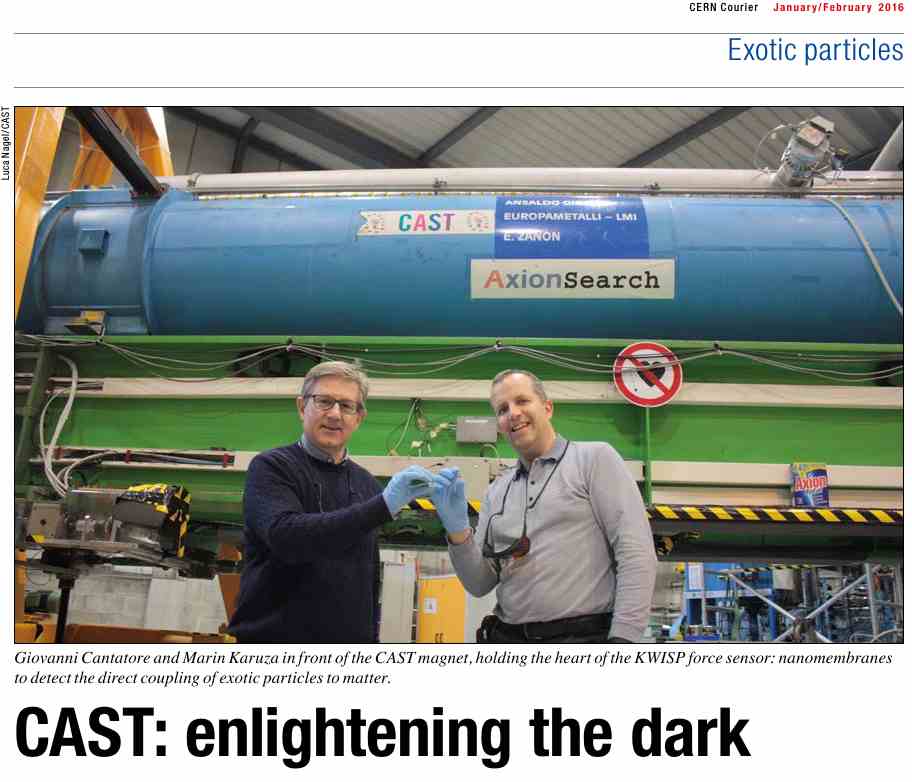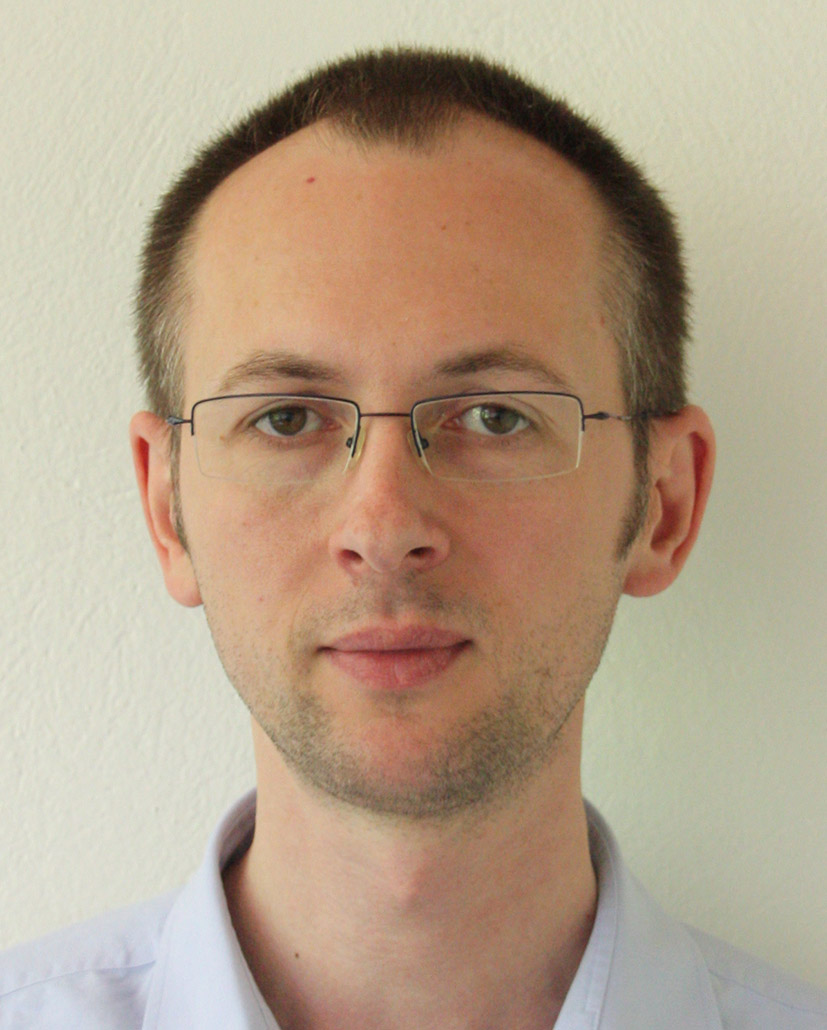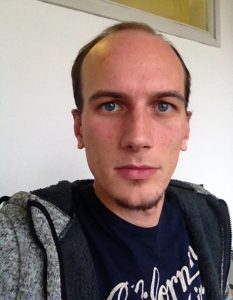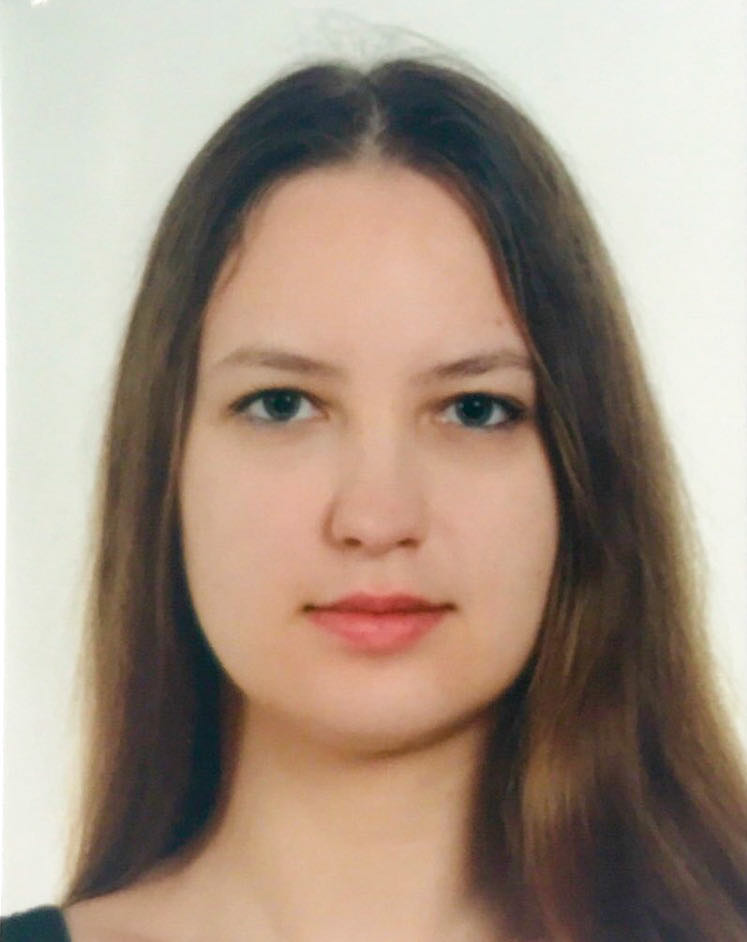- Generating quantum coupled pairs of photons
 At RBI we have built an experimental setup for parametric down-conversion using home made laser wavelength of 405 nm. Photograph on the left shows cross-section of the light cones exiting the nonlinear BBO crystal.
At RBI we have built an experimental setup for parametric down-conversion using home made laser wavelength of 405 nm. Photograph on the left shows cross-section of the light cones exiting the nonlinear BBO crystal.
Quantum entangled “Einstein-Podolsky-Rosen” (EPR) photon pairs are created at the intersections of the cones. For most of the planned research, we need much stronger source of energy-degenerated EPR pairs in order to fulfill the objectives of the proposed research in quantum holography, optical resonators, hyperentanglement, super fast quantum cryptography, random number generation, searching for hidden vector bosons, and so on. The preferred technical solution to EPR generation the current state of the art is to build a source in the VIS-NIR wavelength area, where our innovative detection technology achieves the best performance, by using the well known technique of periodically poled nonlinear optical crystals.
- Novel photon detectors and detector characterization methods
In our group we have a strong expertise in building single photon detectors based on avalanche photodiodes driven in the Geiger mode. We are active in developing innovative photon-counting techniques as well as in research of novel methods for characterization of photon detectors. The research conducted in CEMS-Photonics is oriented towards the study and use of quantum properties of individual photons, therefore almost all our experiments depend on the detection and counting of photons. To that end we almost exclusively use photon-counting detectors developed and optimized in our lab.
- Holography
The current situation in the field of holography is mainly the use of powerful laser source and a CCD camera to record the hologram. We plan to expand the holographic technology in two new directions: holography with individual photons and quantum holography, and for this we need a new type of positionally-resolution camera sensitive to individual photons.
While holography is used for recording and reconstruction of complex three-dimensional wave fronts, interferometry enables the analysis of static and dynamic changes in these wave fronts. Both techniques, holography and interferometry, have gone through several pathways. One route goes from classic to digital (replacing the photo-emulsion CCD sensors) which opened up new opportunities such as the production of digital holographic interferometric video film in color or vibration monitoring of modal structure in real time. Another development path goes towards recording a scene illuminated by fundamentally lowest intensity of light. In all these segments members of our group have made significant contributions. This second time, leading to ultra-low levels of light or to holography with individual photons and, for the moment hypothetical, quantum holography. Terms of ultra-low-level lighting impose particularly demanding laboratory needs such as special light sources, the matrix of the position-resolved detectors sensitive to individual photons, as well as laboratory space completely devoid of vibration and other disturbances. In return, new research directions could provide original theoretical developments, applications and inventions.
- Quantum cryptography and quantum communication
Quantum cryptography allows completely secure transfer of information between two points via a technique for growing a previously existing “small” shared key. Up to now has been proven that the security of quantum protocol guaranteed the laws of quantum physics and even under the assumption that they hold only approximately, ie. if our understanding of quantum physics is incomplete. Practical devices for quantum cryptography has already been commercialized (IqQuantitue, Switzerland and MagiQ, USA), but are currently far from the convenience and price that would allow for wider use. In order to obtain practical devices significant progress on fundamental and technological levels is required.
- Search for bosons of the hidden sector optical techniques
Hidden Sectors are groups of fundamental fields that act between them but have very little interaction with the visible world, are common ingredients theories that extend the standard model and strive for an explanation of its parameters and hierarchy. Fields in the Standard Model allows kinetic mixing between the Standard Model and the hidden (1) fields where the boson (now hypothetical) that belongs to the added U (1) group called parafotonom. There is a wealth of theoretical models that provide enough freedom to justify the existence of parafotons with any parameters that are allowed by experimental observations. Kinetic mixing provides a mechanism for the oscillation of photons in the light boson and back that can be used in experiments based on its weak interaction with the visible world. This type of experiment is generally called “the passage of light through the wall”. If the photon on one side of the wall turns into parafoton, he can pass unhindered through the opaque wall. On the other side of the wall, provided that the condition of the balance exceeds parafotons photons, in a suitable low-noise detector will be detected photon. Probability observations signal can be increased by several orders of magnitude using optical resonant cavities on both sides of the wall, which is the path of research which we started.
- Quantum randomness of quantum contextuality
Coincidence or randomness is an invaluable resource in many areas of scientific research and practical applications, especially in computer science and ICT security. The classic computer generated pseudo-random numbers that can be useful in some applications, they remain fundamentally deterministic and therefore, at least in principle, predictable detrimental to the security of cryptography. We have proven that quantum cryptography is impossible without local private random number generator or something equivalent that. There are several open issues related accident. Firstly, as of yet we have no definition of randomness. Then there is the question of what is the source of randomness in quantum physics, is there a true randomness or are there hidden variables?
Random Number Generators are one of the hot topics of research in the last decade. However the sharp discrepancy between the number of publications (83 patents per year in the last decade, in 1418 total, countless scientific articles) and the number of just five earned practical quantum random number generator that has ever appeared on shows clearly the conceptual and technical immaturity of this branch. In our opinion, the main problems are the lack of evidence of a coincidence and unrepeatable results. Our research will be directed towards the elimination of these problems.
Quantum randomness is also implicitly contained in quantum contextuality. Quantum contextuality is the property of a quantum system that any of its measurements has a value independent of other compatible measurements carried out at the same time. Hence, measurement results of quantum systems cannot in general have predetermined values and the sets that satisfy this quantum property are called Kochen-Specker (KS) sets. In this area, we already have significant theoretical results and we will continue theoretical and experimental research in this area.
The study of randomness and the principle of generating random numbers can easily result in new EU projects, inventions and cooperation with small and medium-sized enterprises (SMEs).
- Scalable quantum computing, contextual and quantum repeaters
Quantum computing is a hypothetical computer paradigm in whose practical realization researchers are working with increasing intensity in recent years. Our group is working on the development on algebraic formalism that could allow universal quantum computing using a direct translation of the standard formalism of Hilbert space to algebraic quantum protocols with built exponential acceleration of computation for certain special class of mathematical problems.
 Sa zadovoljstvom objavljujemo da je 9. travnja 2018. istraživači Istraživačke jedinice Fotonika i kvantna optika Znanstvenog centra izvrsnosti za napredne materijale i senzore, na Institutu Ruđer Bošković, dovršili su gradnju eksperimentalnog postava izvora parova spregnutih fotona zasnovanog na procesu spontane parametarske pretvorbe (Engl. spontaneous parametric downconversion (SPDC), kolinearni proces tipa II) fotona valne duljine 405 nm u parove infracrvenih fotona u PPKTP kristalu te optičkom postavu u Sagnac-ovoj konfiguraciji. Izvor stabilno generira koincidentne parove polarizacijski spregnutih fotona.
Sa zadovoljstvom objavljujemo da je 9. travnja 2018. istraživači Istraživačke jedinice Fotonika i kvantna optika Znanstvenog centra izvrsnosti za napredne materijale i senzore, na Institutu Ruđer Bošković, dovršili su gradnju eksperimentalnog postava izvora parova spregnutih fotona zasnovanog na procesu spontane parametarske pretvorbe (Engl. spontaneous parametric downconversion (SPDC), kolinearni proces tipa II) fotona valne duljine 405 nm u parove infracrvenih fotona u PPKTP kristalu te optičkom postavu u Sagnac-ovoj konfiguraciji. Izvor stabilno generira koincidentne parove polarizacijski spregnutih fotona. 
















